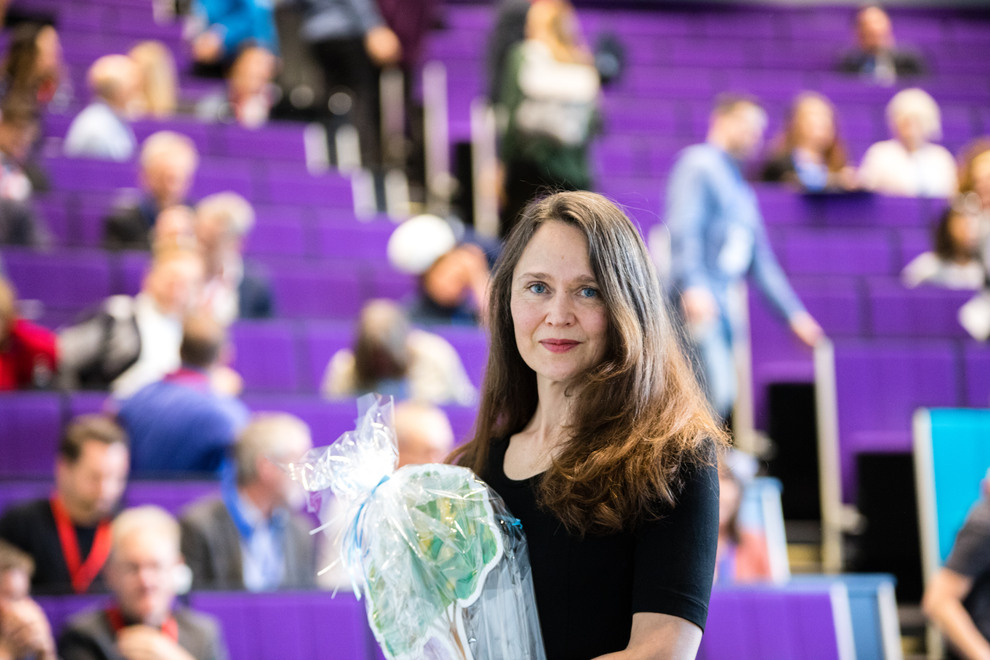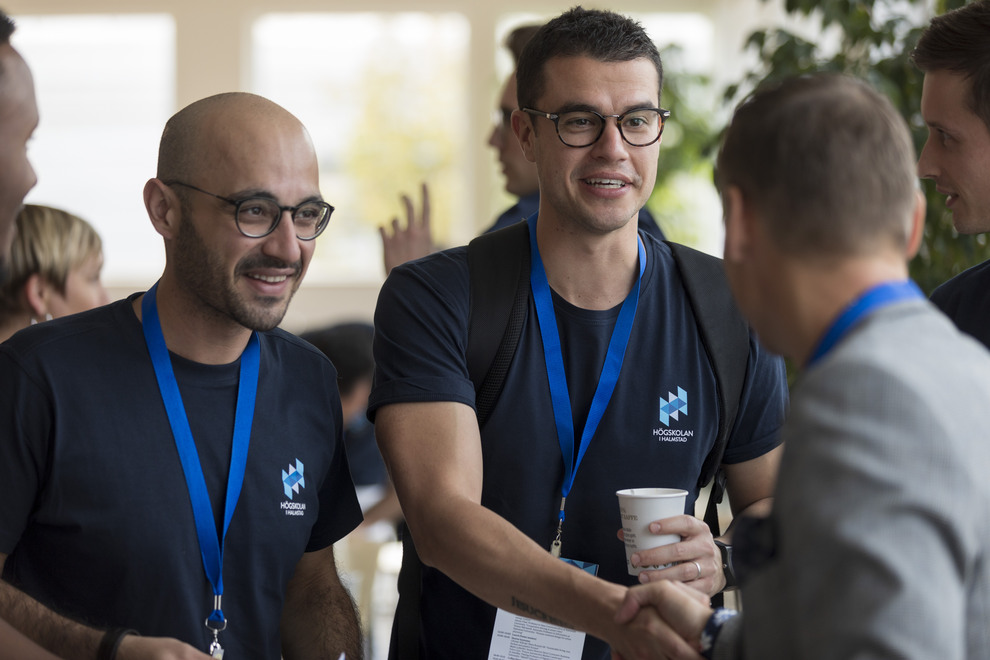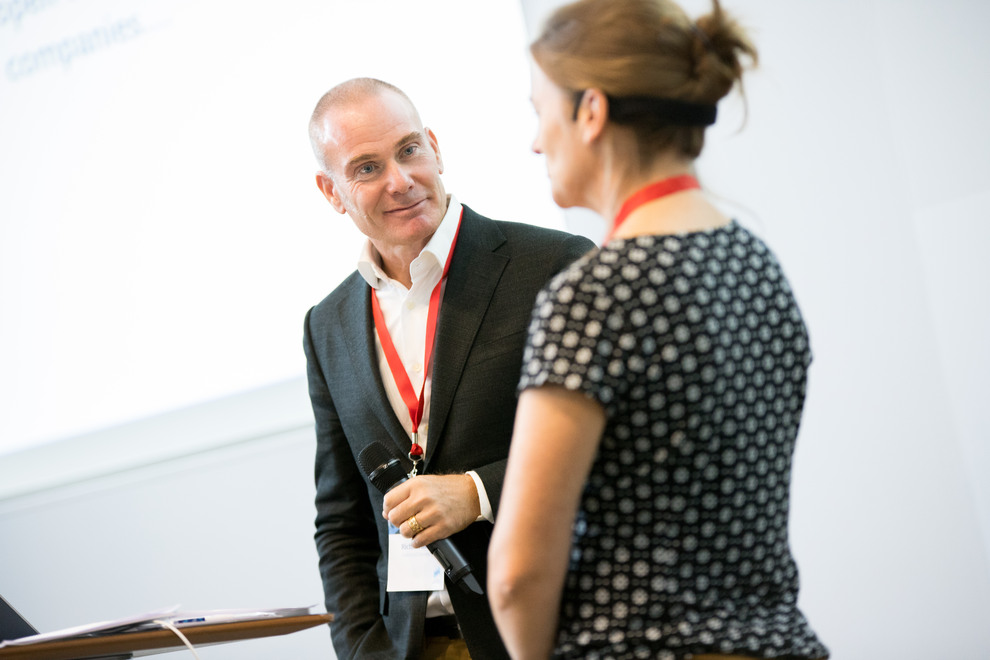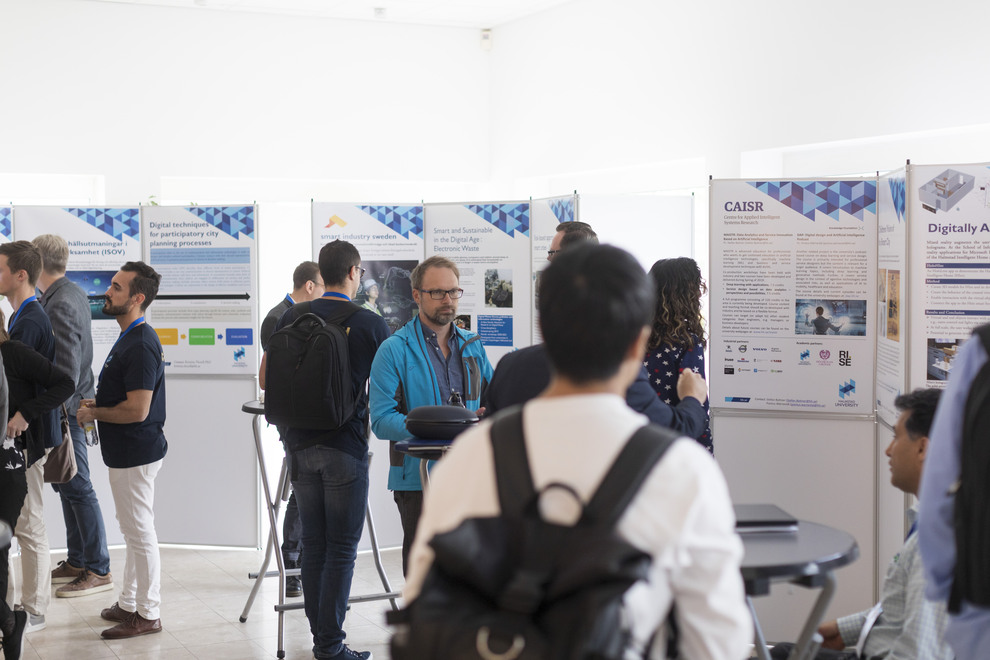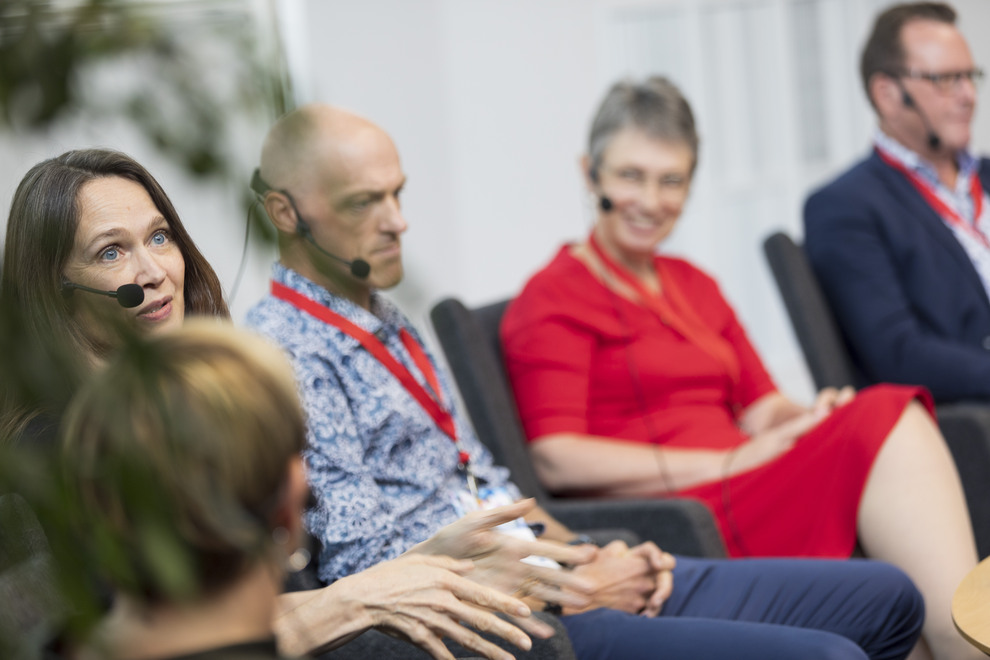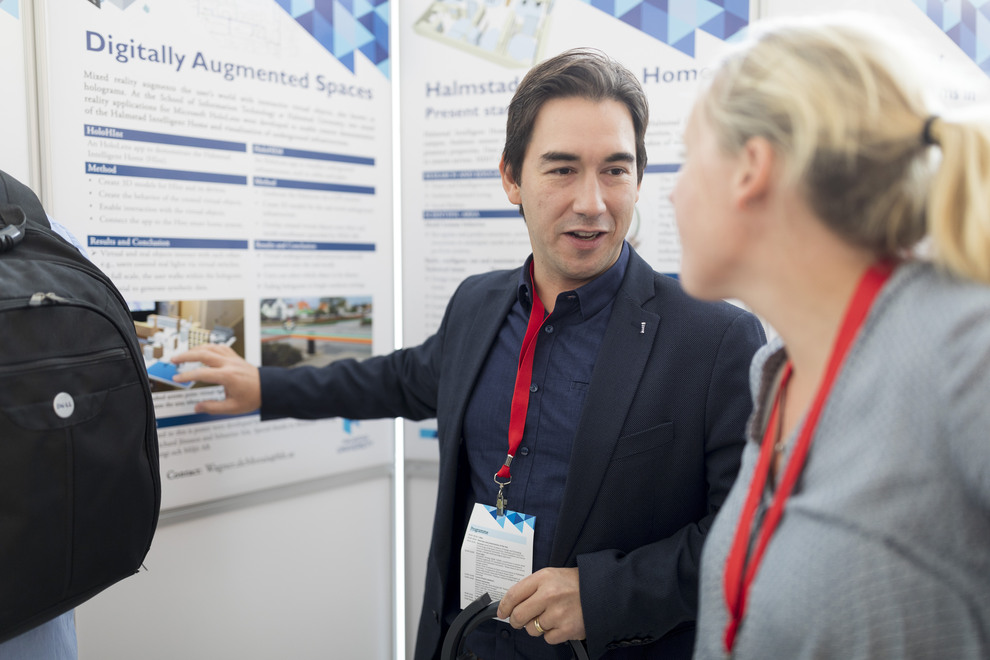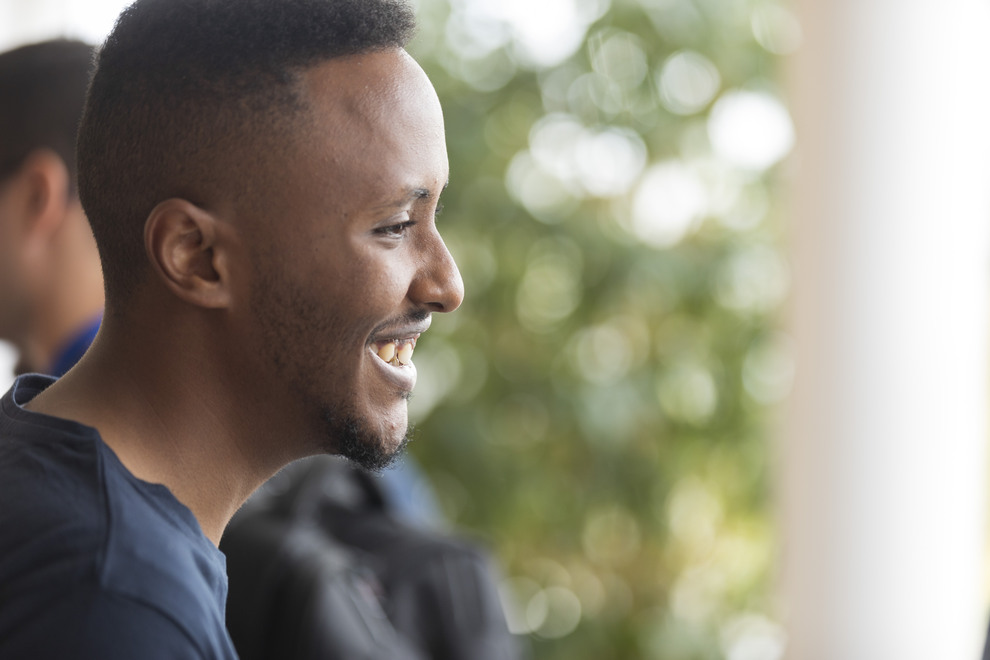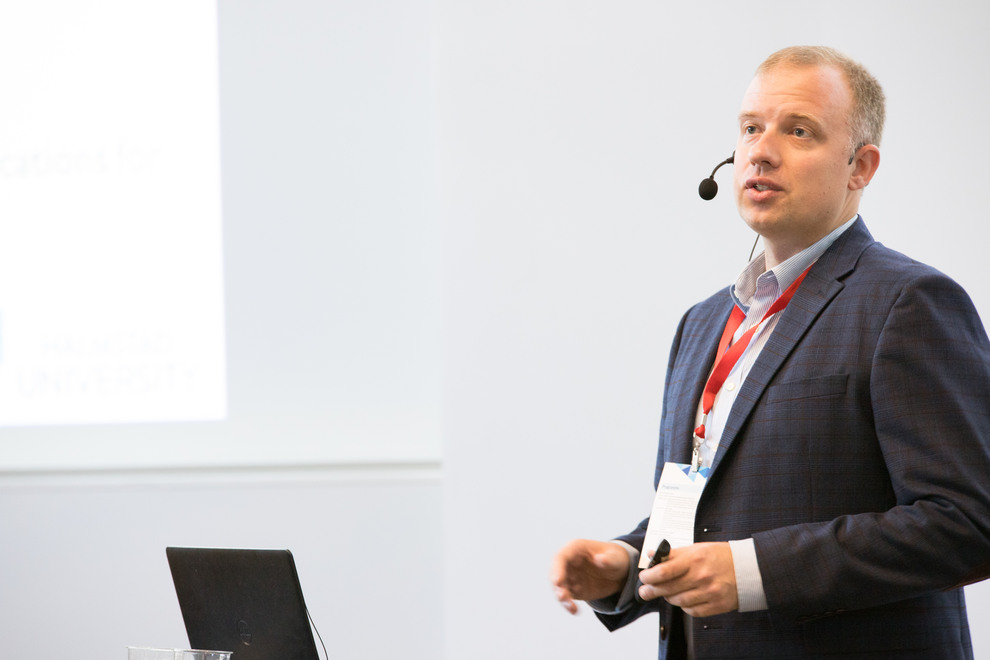Innovation Conference 2019 – what is a smart city?
“A smart city has to be continuously evolving, together with the people living in it”, said keynote speaker Sarah Pink when asked how to define a smart city. The speakers and discussions at this year’s innovation conference at Halmstad University ranged from high-tech solutions for autonomous vehicles, to human-centered design methods. What everyone seemed to agree upon, is the importance of putting people in the center when developing sustainable smart cities and communities – and that collaboration between different stakeholders is essential.
”Designing with people – where do we start? How do we make people accept and adopt technology? How to engage with people’s concerns, aspirations, community values and knowledge? How to reach societal goals while serving the citizens? Put people’s everyday lives in the center!”
Sarah Pink, keynote speaker
Halmstad University’s annual innovation conference was held on September 19. It gathered representatives from companies and municipalities, as well as researchers and students – all engaged in the development of future smart cities and communities. This year, the innovation conference was organised by Halmstad University’s profile area Smart Cities and Communities. The conference highlighted activities and collaboration projects about smart mobility, smart energy and smart education.
”What do people already do in a city? How can we collect that and create future smart cities? Focus on the people, not the technology”, said keynote speaker Sarah Pink, Professor of Design and Emerging Technology at Monash University, Australia and Guest Professor at Halmstad University, during her inspiring talk ”Future mobilities and future energy: a design anthropological approach”.
Smart energy, housing, vehicles, architecture and education
Kristina Lygnerud from IVL Swedish Environmental Research Institute and Halmstad University talked about waste heat in future energy systems and Christer Kilersjö from Eksta Bostad AB gave examples of how sustainability can be a part of a company’s corporate culture. Malin Labecker, Senior Director Direct Consumer Business at Volvo Cars, gave a lecture about the new and challenging landscape for the automotive industry:
“Cities around Europe are banning diesel and petrol. We have to cooperate with the cities!”, said Malin Labecker.
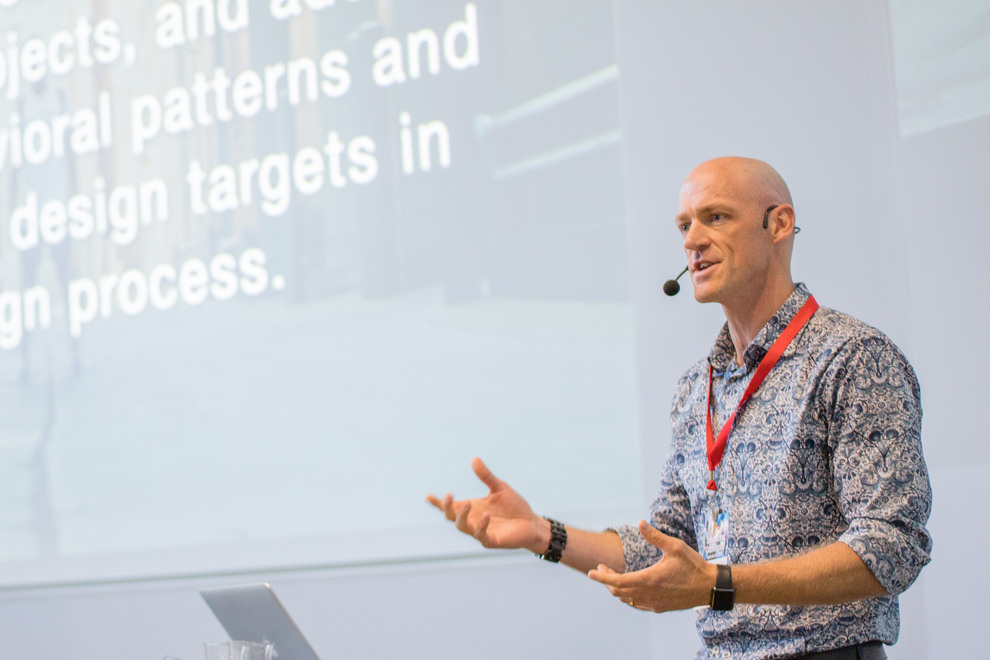
Pontus Wärnestål, Associate Professor in Informatics at Halmstad University, talked about the importance of user perspective when designing a smart city. Pontus Wärnestål presented the research project Participatory Urban Design (PUD) where service design has been applied to urban planning.
Alexey Vinel, Professor in Data Communication at Halmstad University, presented a newly started research project called SafeSmart – Safety of Connected Intelligent vehicles in Smart Cities. The goal of the project is to find technical solutions on how to safely steer autonomous vehicles through intersections in an urban environment.
“Personalised and structured learning is the key to acquiring confidence and achieving successful individual and organisational outcomes. Technology is integral to everything we do", said Jo Smedley, Visiting Professor of Digital Learning at Halmstad University, during her lecture "SMART Education: what's in it for me?".

“We see the conference as a huge success. The great speakers showed both the depth and the breadth of what we are doing related to Smart Cities and Communities. And we had a great and interested audience whom seemed pleased with the day”, says Kristian Widén and Magnus Jonsson, Deputy Program Director and Program Director of Halmstad University profile area Smart Cities and Communities.
The panel agreed on the importance of collaboration
The conference ended with a panel discussion of how and if a smart city can be defined. Pontus Wärnestål, Associate Professor in Informatics at Halmstad University, concluded that a smart city has to be sustainable and that it contains smart citizens. Jo Smedley, Visiting Professor of Digital Learning at Halmstad University, added that smart people are happy people – an important aspect given our societal challenges with mental health issues and stressful lives. Malin Labecker’s answer to the panel’s final question “what first step can you take towards a smart city?”, wrapped up the conference in a good way:
“Don’t try to do it alone!”
Reflections from conference participants
Students:
Six students from different Master’s Programmes at Halmstad University – International Marketing, Industrial Management and Innovation, Renewable Energy, Mechanical Engineering and Embedded and Intelligent Systems – participated in the conference. They collaborate in a project called Catfish which has been developed within the Master’s Progamme in Industrial Management and Innovation. The goal of the project is to develop underwater drones to monitor water bodies in real time.
”The conference has been very interesting for us. We have seen different approaches to different issues that we can adapt to our project. And we have met some interesting people that we want to contact individually afterwards".
“There is one thing missing in the seminars though – no one is talking about water, which is a big global issue”.
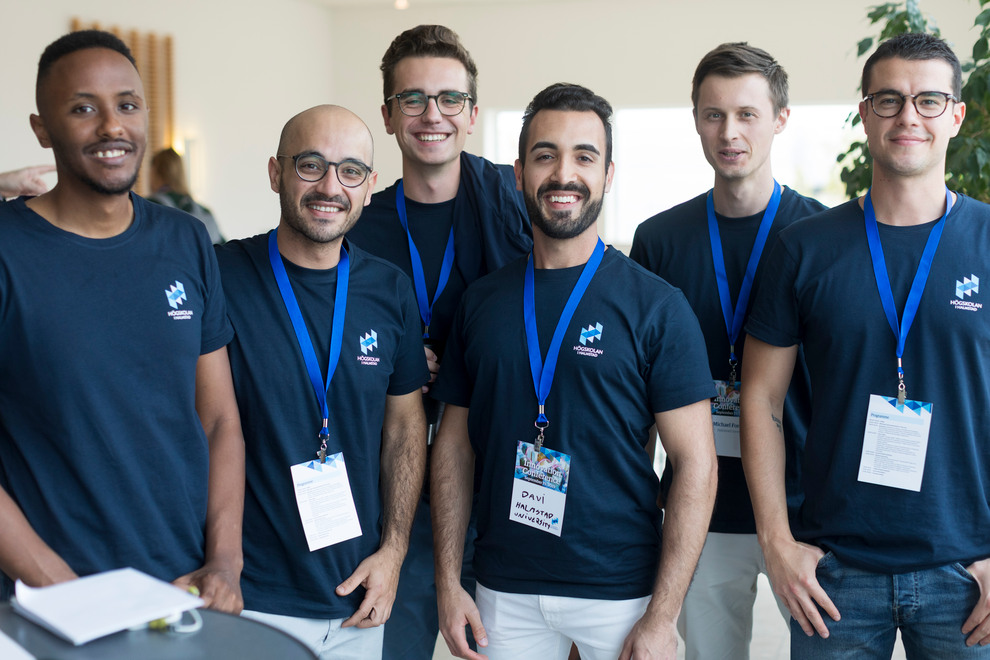
Master's students: Hamad Farah, Alireza Esmaeilzadeh, Laurenz Daßing, Davi Rogerio Waltrick, Michael Forschle and Harvey Blanco.
Research funding representative:
Göran Andersson, Vinnova
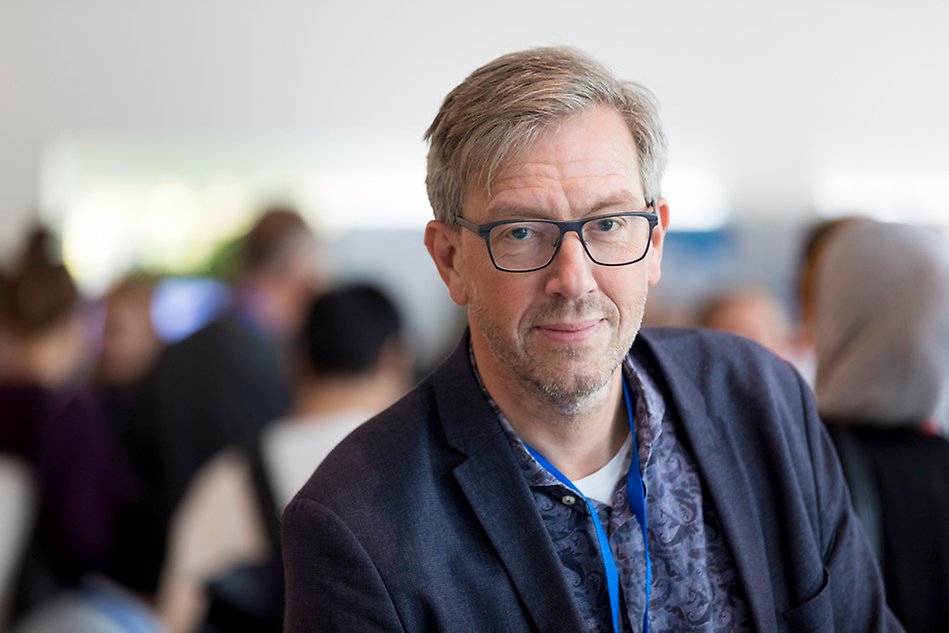
"It is clever of Halmstad University to focus on profile areas. There is already a good collaboration with the automotive industry. But as a small player, it is important to niche yourself in an area that is complementary to something bigger. In that way, you are clear in your mission and an expert at that, but you do not believe that you are good enough on your own. Sweden is too small for that".
Business representative:
Mårten Dragstedt, Tremco illbruck AB
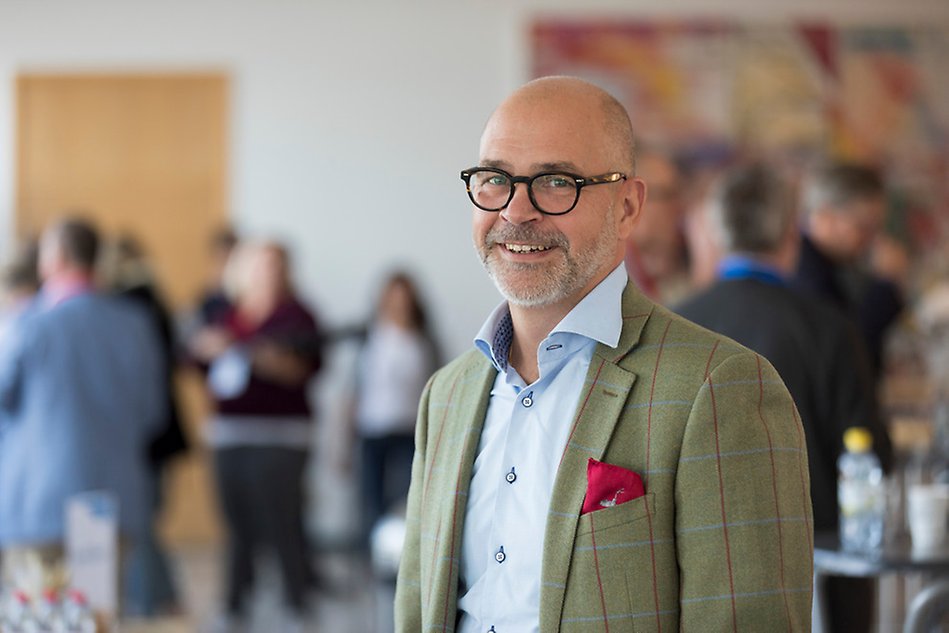
"There are mainly two things I carry with me after today's conference. Firstly, I will invite users of our products and listen to their perspective. It's something I've thought about many times but I haven't prioritised it – until now. The second thing is the model that Pontus Wärnestål showed, where they identified "why, what, how". I think that model could be used in our industry as well to understand the customer.
Municipality representatives:
Varbergs municipality and
Varbergs Bostad AB
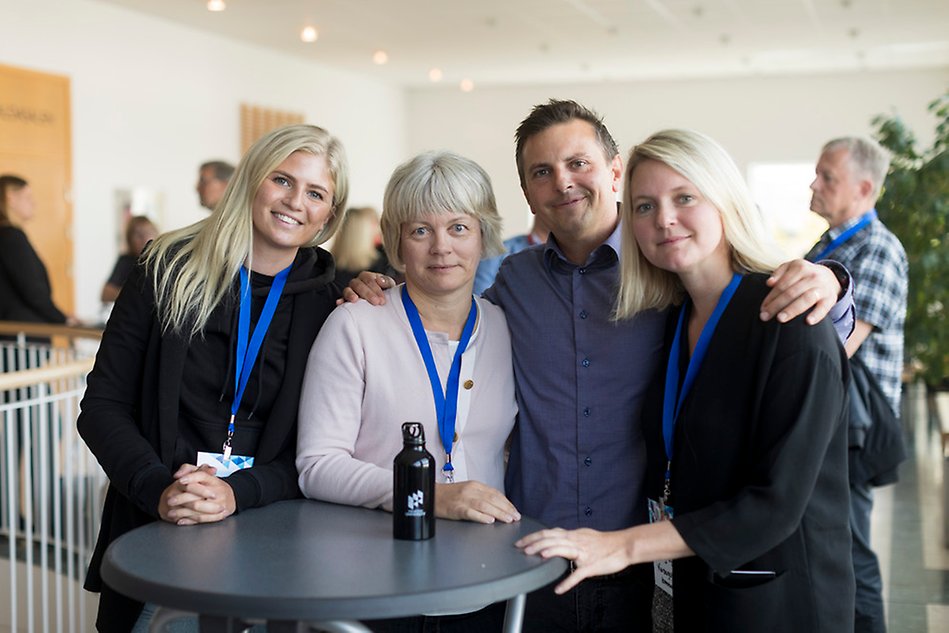
"We find it exciting to hear about the latest research within smart cities. Smart mobility and energy are areas in which the municipality wants to be at the forefront. What is particularly interesting is what we have heard today about putting people in focus and let them push the development. We cannot apply technical solutions until we have a demand from the inhabitants. Our vision is to develop a sustainable Varberg, both socially, economically and environmentally", said Jeanna Otterdahl, Jeanette Larsson, Christian Westerling and Jenny Rydén.
Researcher:
Sarah Pink, Professor of Design and Emerging Technology
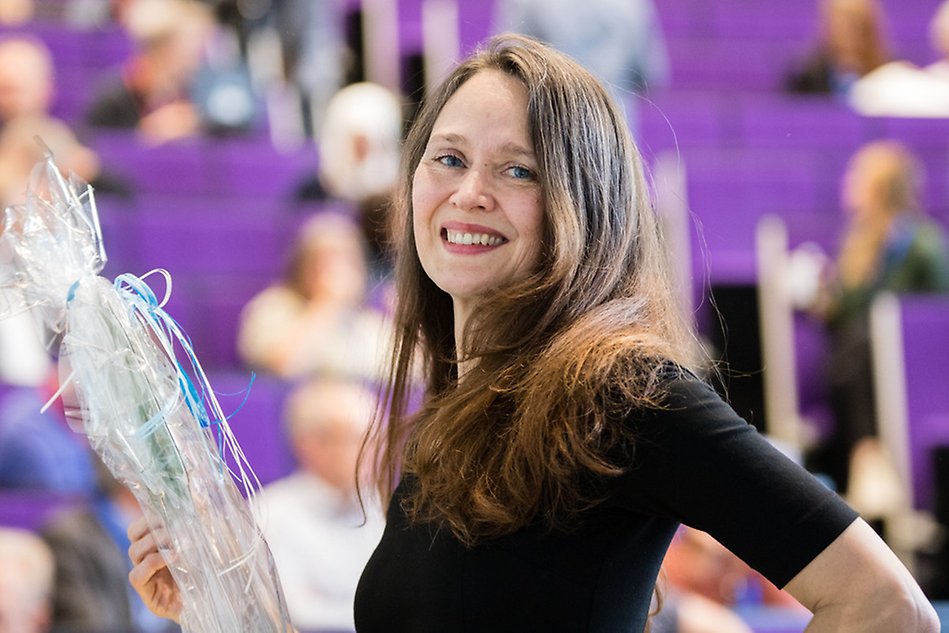
”The range of presentations today was really great. We had presenters talking from the people perspective, the technology and engineering perspective and the service design perspective. So the conference brought together those perspectives and enabled them to be discussed alongside each other. And this is very characteristic for research projects at Halmstad University in general, bringing together different stakeholders.”
Text: Louise Wandel
Photo: Helena Bengtsson and Anders Andersson
More information
Moderators for the Innovation Conference 2019 were Vaike Fors, Associate Professor in Pedagogy at Halmstad University, and Richard Bunk, Director of Future Mobility Center at Halmstad University.
Programme for the Innovation Conference 2019
Halmstad University profile area Smart Cities and Communities
Halmstad University profile area Health Innovation
Research project: A human approach to designing future cities and intelligent cars (AHA)
Research project: Participatory Urban Design (PUD)
Research project: SafeSmart – Safety of Connected Intelligent vehicles in Smart Cities

